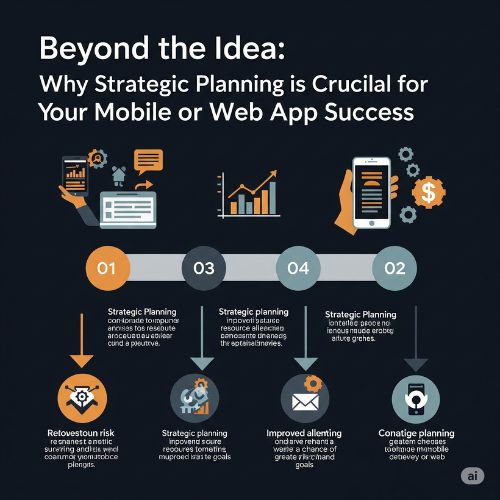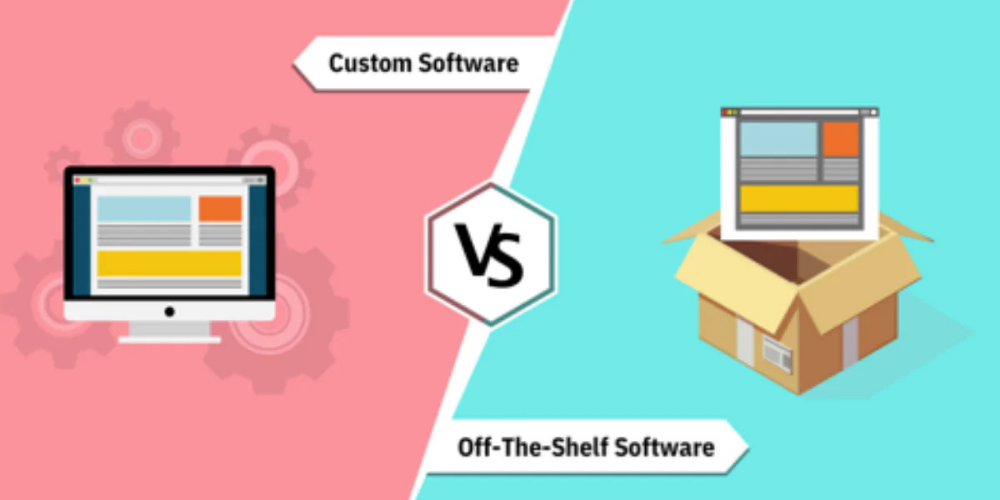
- Blog
- 14 Jun. 2025
Introduction: Every great mobile or web app starts with an idea. But an idea, no matter how brilliant, is just the beginning. The journey from a concept to a successful, user-loved application is paved with meticulous planning and strategic foresight. In today's competitive digital landscape, skipping the foundational planning phase is akin to building a house without blueprints – it might stand for a while, but it's destined for collapse. For businesses, startups, and entrepreneurs in Indore and beyond, understanding the "why" and "how" before the "what" is paramount for achieving app success.
1. Defining Your Vision and Objectives: The North Star Before a single line of code is written, you need to clearly define what your app aims to achieve. Is it to streamline an internal process, connect with customers, generate revenue, or disrupt an industry? Setting clear, measurable objectives (e.g., "increase customer engagement by 20%" or "reduce operational costs by 15%") provides a quantifiable target. Without a defined vision, development can drift, leading to scope creep and missed deadlines. This initial clarity acts as your project's north star.
2. Deep Dive into Market Research: Knowing Your Terrain Understanding your market is non-negotiable. This involves:
- Target Audience Identification: Who are your users? What are their demographics, pain points, behaviors, and preferences? A deep understanding helps tailor features, design, and marketing efforts.
- Competitor Analysis: Who are your direct and indirect competitors? What do they do well? Where do they fall short? Analyzing their strengths and weaknesses allows you to identify unique selling propositions (USPs) and differentiate your app.
- Market Trends: Are there emerging technologies or shifting user behaviors that could impact your app's viability or provide new opportunities? Keeping an eye on trends in mobile app development and web app development ensures your solution remains relevant.
3. Feasibility Study and Risk Assessment: Grounding Your Vision Is your idea technically feasible within your budget and timeline? A feasibility study evaluates the practical aspects of development. Simultaneously, a thorough risk assessment identifies potential challenges – be it technological hurdles, market resistance, or resource constraints. Proactive identification allows for mitigation strategies, saving time and money in the long run.
4. Crafting the User Experience (UX) and User Flow: While UI/UX design is a separate phase, the initial planning involves mapping out the core user journeys. How will users interact with your app? What steps will they take to achieve their goals? This early mapping, often through wireframing and basic flowcharts, ensures a logical and intuitive user experience from the outset, reducing costly redesigns later.
5. Defining Key Features and Prioritization: Less is Often More Resist the urge to pack every possible feature into your initial release. Strategic planning involves identifying the Minimum Viable Product (MVP) – the core set of features that address the primary user problem. Prioritizing features based on market need, business value, and technical complexity ensures you launch a focused, functional product quickly, gather user feedback, and iterate.
Conclusion: Strategic planning is the bedrock of successful mobile and web app development. It transforms a fleeting idea into a well-defined project with a clear roadmap, mitigating risks, optimizing resources, and significantly increasing the chances of market acceptance and long-term success. It's an investment that pays dividends by preventing costly mistakes and ensuring your app truly meets its intended purpose.
Call to Action (CTA): Ready to turn your idea into a successful app? Don't leave your digital future to chance. Contact us for a free consultation and let's strategically plan your next mobile or web app masterpiece!






